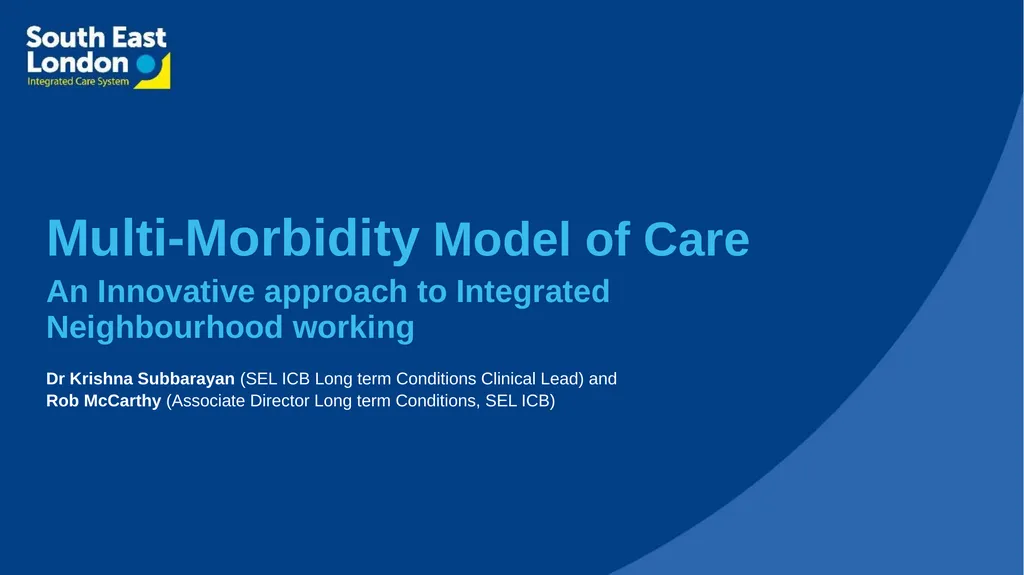
Multi-Morbidity Model of Care An Innovative
Author: debby-jeon | Published: 2025-07-18
Description: Multi-Morbidity Model of Care An Innovative approach to Integrated Neighbourhood working Dr Krishna Subbarayan (SEL ICB Long term Conditions Clinical Lead) and Rob McCarthy (Associate Director Long term Conditions, SEL ICB) True Integration
Download Presentation
Download the PPT/PDF: Download
Transcript:
Loading transcript…